实例介绍
【实例简介】Introduction to Wireless Digital Communication(无线数字通信简介)
Introduction to Wireless Digital Communication A Signal Processing Perspective by Robert W. Heath Jr.
【实例截图】


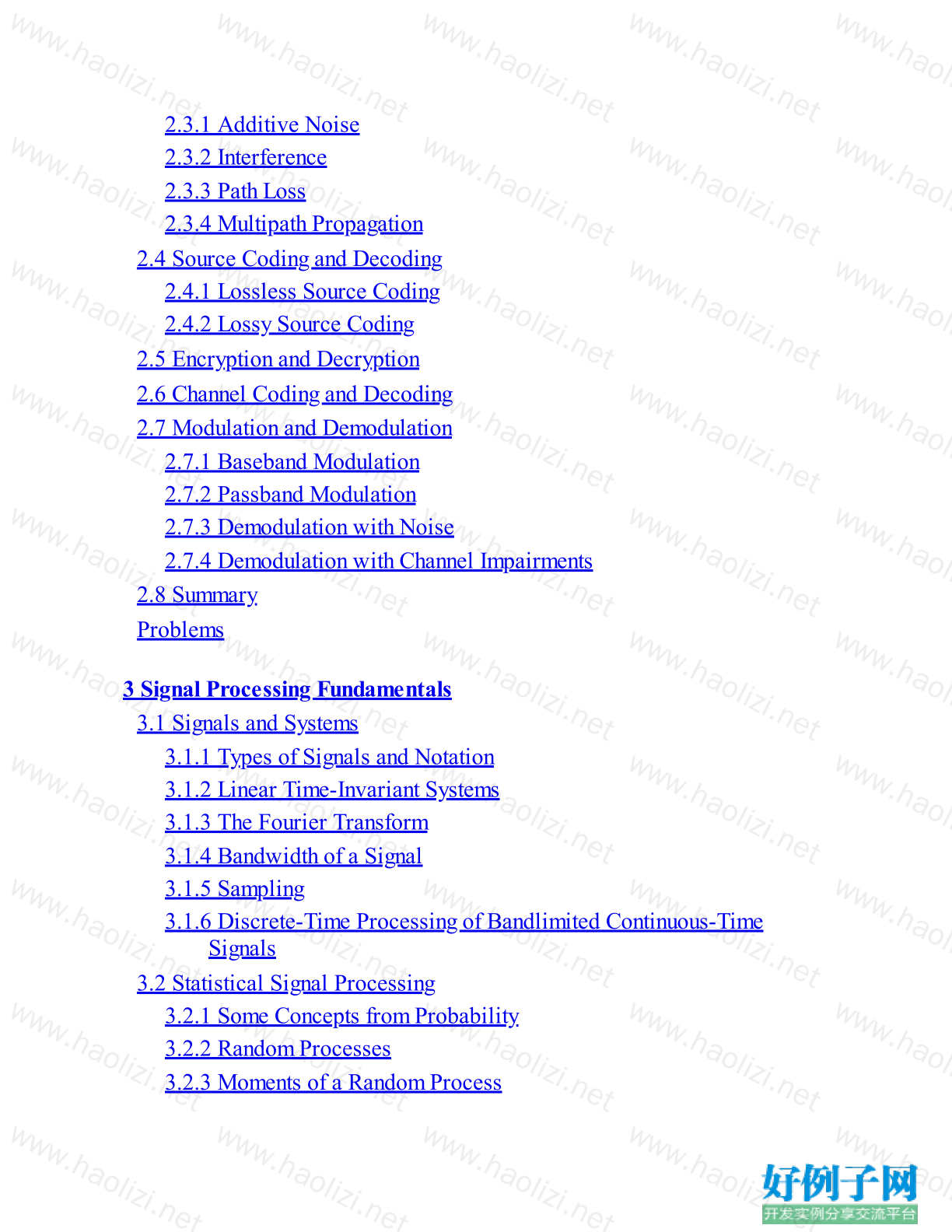
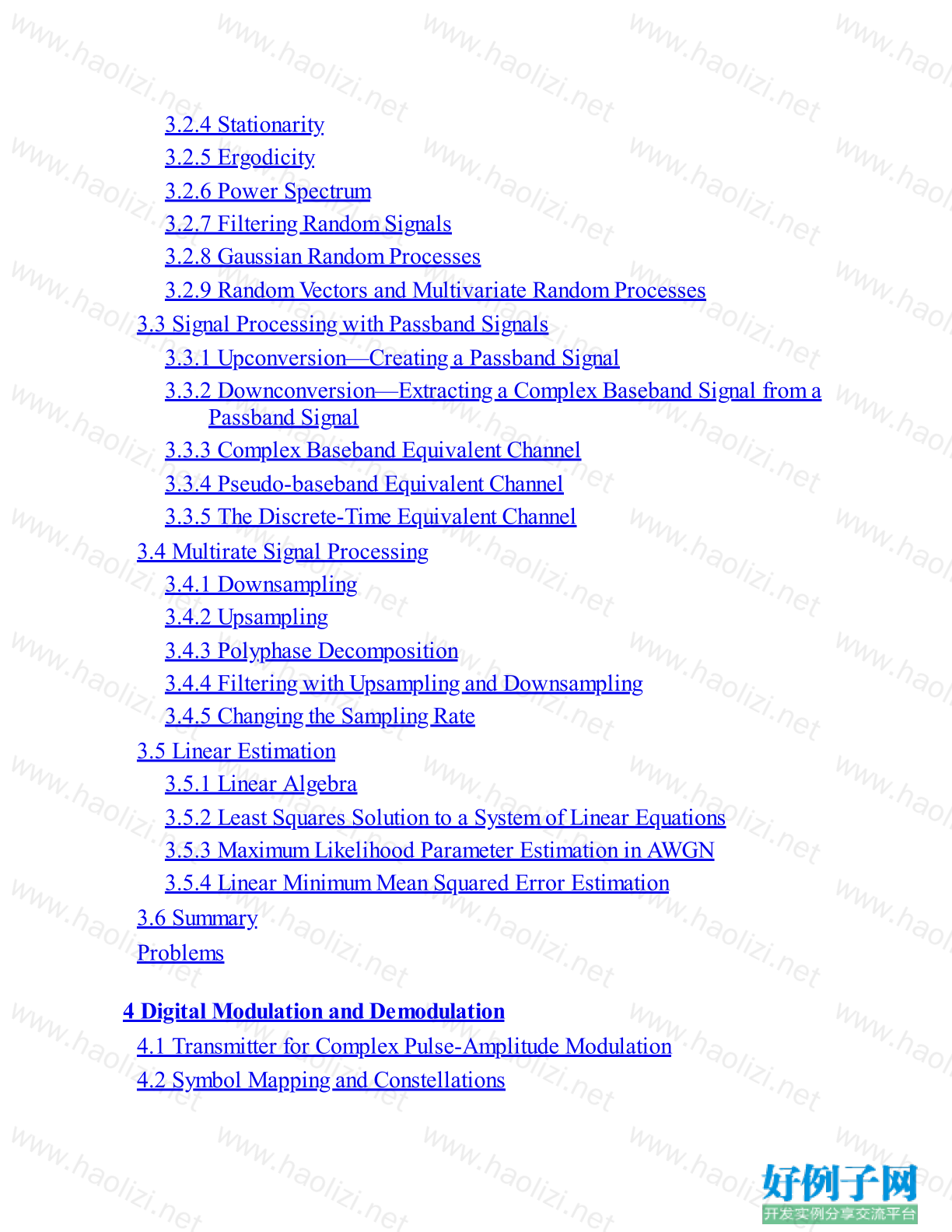
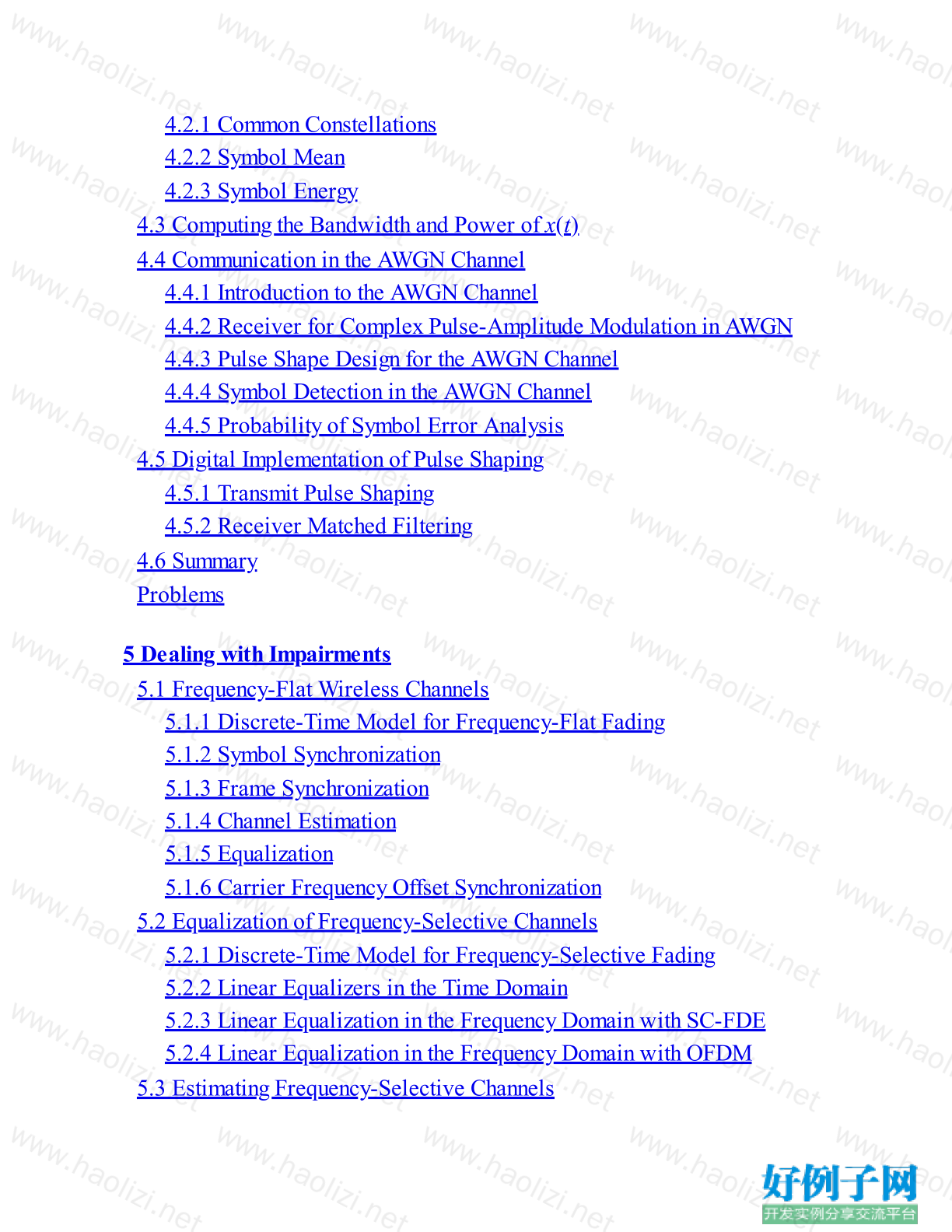
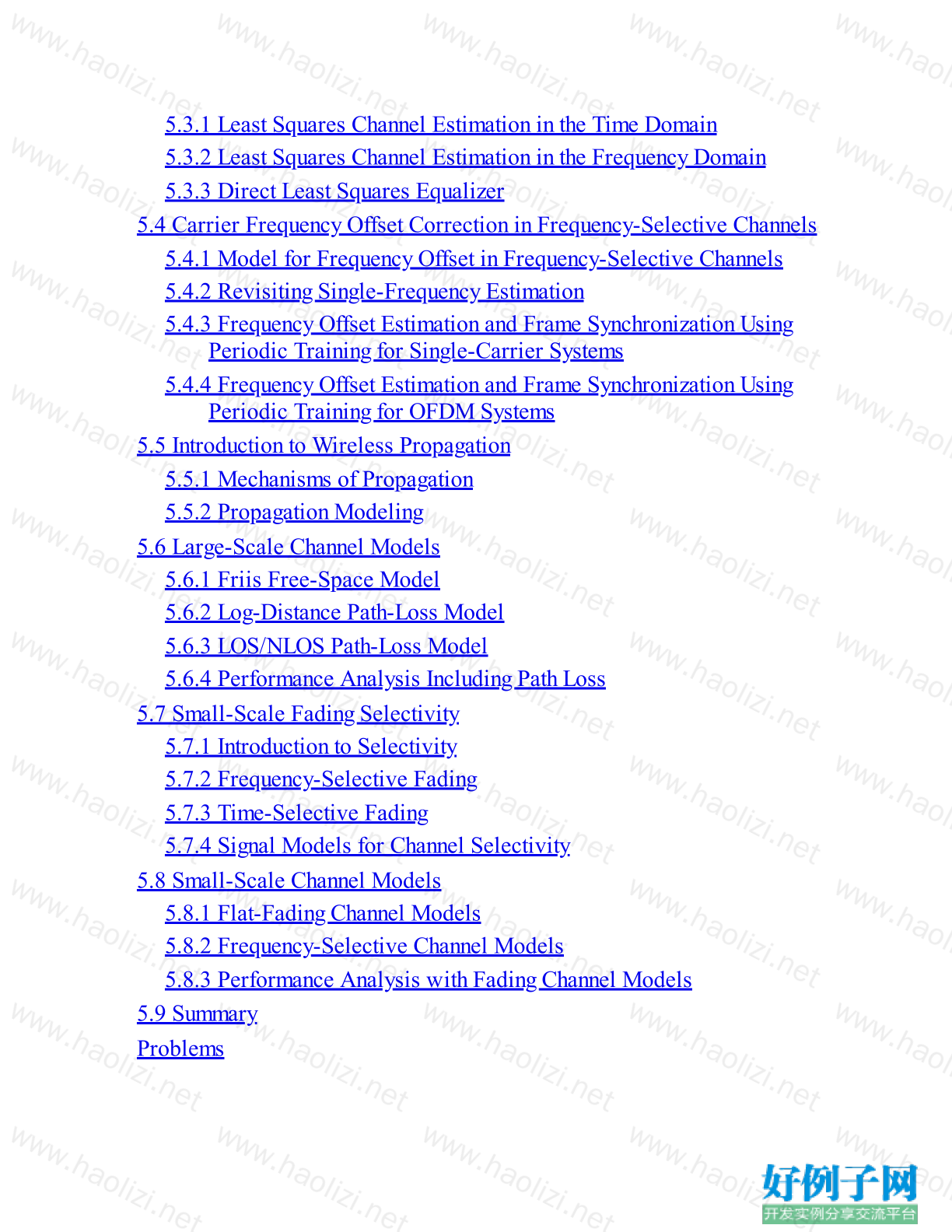

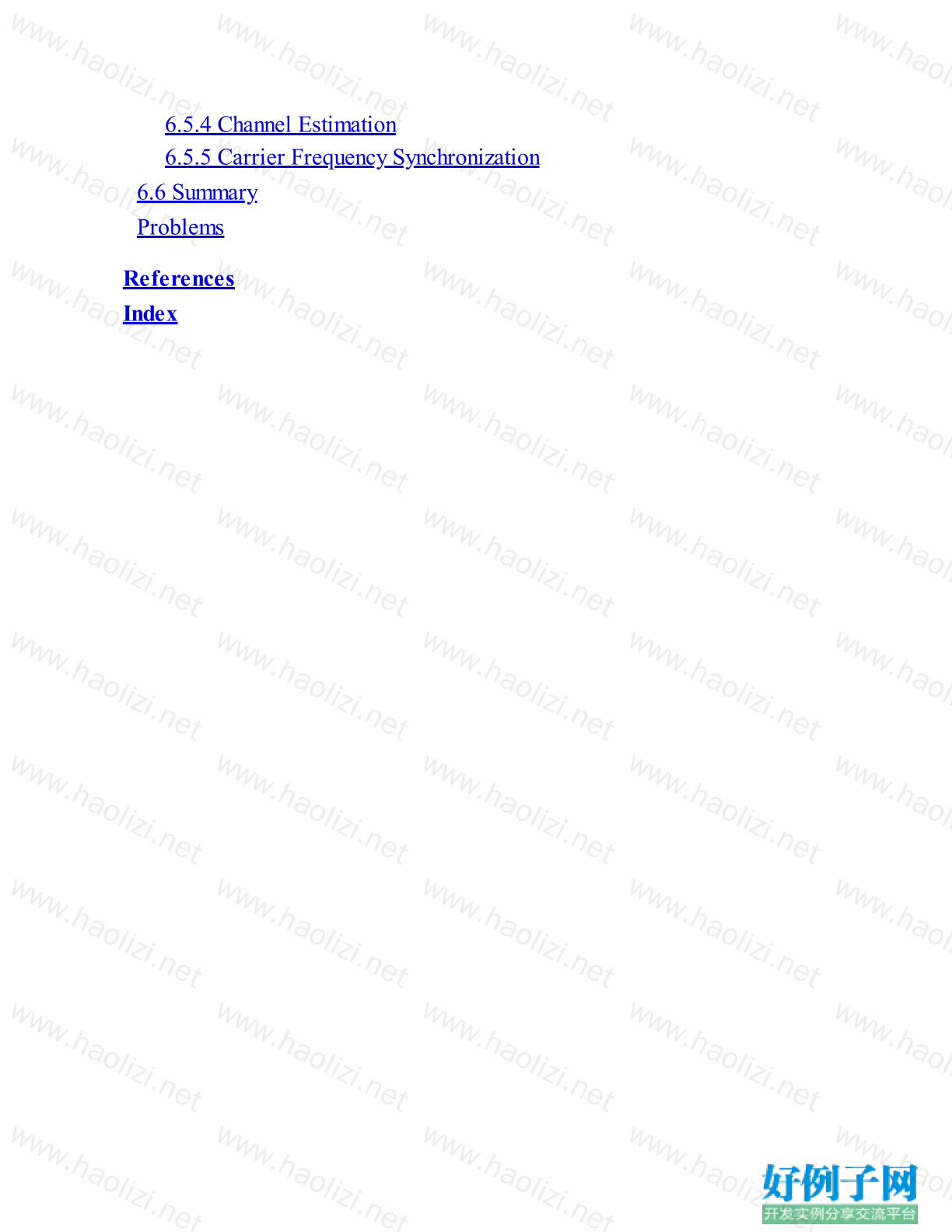
【核心代码】
Contents
Preface
Acknowledgments
About the Author
1 Introduction
1.1 Introduction to Wireless Communication
1.2 Wireless Systems
1.2.1 Broadcast Radio
1.2.2 Broadcast Television
1.2.3 Cellular Communication Networks
1.2.4 Wireless Local Area Networks (WLANs)
1.2.5 Personal Area Networks (PANs)
1.2.6 Satellite Systems
1.2.7 Wireless Ad Hoc Networks
1.2.8 Wireless Sensor Networks
1.2.9 Underwater Communication
1.3 Signal Processing for Wireless Communication
1.4 Contributions of This Book
1.5 Outline of This Book
1.6 Symbols and Common Definitions
1.7 Summary
Problems
2 An O?er?iew of Digital Communication
2.1 Introduction to Digital Communication
2.2 Overview of a Wireless Digital Communication Link
2.3 Wireless Channel
2.3.1 Additive Noise
2.3.2 Interference
2.3.3 Path Loss
2.3.4 Multipath Propagation
2.4 Source Coding and Decoding
2.4.1 Lossless Source Coding
2.4.2 Lossy Source Coding
2.5 Encryption and Decryption
2.6 Channel Coding and Decoding
2.7 Modulation and Demodulation
2.7.1 Baseband Modulation
2.7.2 Passband Modulation
2.7.3 Demodulation with Noise
2.7.4 Demodulation with Channel Impairments
2.8 Summary
Problems
3 Signal Processing Fundamentals
3.1 Signals and Systems
3.1.1 Types of Signals and Notation
3.1.2 Linear Time-Invariant Systems
3.1.3 The Fourier Transform
3.1.4 Bandwidth of a Signal
3.1.5 Sampling
3.1.6 Discrete-Time Processing of Bandlimited Continuous-Time
Signals
3.2 Statistical Signal Processing
3.2.1 Some Concepts from Probability
3.2.2 Random Processes
3.2.3 Moments of a Random Process
3.2.4 Stationarity
3.2.5 Ergodicity
3.2.6 Power Spectrum
3.2.7 Filtering Random Signals
3.2.8 Gaussian Random Processes
3.2.9 Random ?ectors and Multivariate Random Processes
3.3 Signal Processing with Passband Signals
3.3.1 Upconversion—Creating a Passband Signal
3.3.2 Downconversion—Extracting a Complex Baseband Signal from a
Passband Signal
3.3.3 Complex Baseband Equivalent Channel
3.3.4 Pseudo-baseband Equivalent Channel
3.3.5 The Discrete-Time Equivalent Channel
3.4 Multirate Signal Processing
3.4.1 Downsampling
3.4.2 Upsampling
3.4.3 Polyphase Decomposition
3.4.4 Filtering with Upsampling and Downsampling
3.4.5 Changing the Sampling Rate
3.5 Linear Estimation
3.5.1 Linear Algebra
3.5.2 Least Squares Solution to a System of Linear Equations
3.5.3 Maximum Likelihood Parameter Estimation in AWGN
3.5.4 Linear Minimum Mean Squared Error Estimation
3.6 Summary
Problems
4 Digital Modulation and Demodulation
4.1 Transmitter for Complex Pulse-Amplitude Modulation
4.2 Symbol Mapping and Constellations
4.2.1 Common Constellations
4.2.2 Symbol Mean
4.2.3 Symbol Energy
4.3 Computing the Bandwidth and Power of x(t)
4.4 Communication in the AWGN Channel
4.4.1 Introduction to the AWGN Channel
4.4.2 Receiver for Complex Pulse-Amplitude Modulation in AWGN
4.4.3 Pulse Shape Design for the AWGN Channel
4.4.4 Symbol Detection in the AWGN Channel
4.4.5 Probability of Symbol Error Analysis
4.5 Digital Implementation of Pulse Shaping
4.5.1 Transmit Pulse Shaping
4.5.2 Receiver Matched Filtering
4.6 Summary
Problems
5 Dealing with Impairments
5.1 Frequency-Flat Wireless Channels
5.1.1 Discrete-Time Model for Frequency-Flat Fading
5.1.2 Symbol Synchronization
5.1.3 Frame Synchronization
5.1.4 Channel Estimation
5.1.5 Equalization
5.1.6 Carrier Frequency Offset Synchronization
5.2 Equalization of Frequency-Selective Channels
5.2.1 Discrete-Time Model for Frequency-Selective Fading
5.2.2 Linear Equalizers in the Time Domain
5.2.3 Linear Equalization in the Frequency Domain with SC-FDE
5.2.4 Linear Equalization in the Frequency Domain with OFDM
5.3 Estimating Frequency-Selective Channels
5.3.1 Least Squares Channel Estimation in the Time Domain
5.3.2 Least Squares Channel Estimation in the Frequency Domain
5.3.3 Direct Least Squares Equalizer
5.4 Carrier Frequency Offset Correction in Frequency-Selective Channels
5.4.1 Model for Frequency Offset in Frequency-Selective Channels
5.4.2 Revisiting Single-Frequency Estimation
5.4.3 Frequency Offset Estimation and Frame Synchronization Using
Periodic Training for Single-Carrier Systems
5.4.4 Frequency Offset Estimation and Frame Synchronization Using
Periodic Training for OFDM Systems
5.5 Introduction to Wireless Propagation
5.5.1 Mechanisms of Propagation
5.5.2 Propagation Modeling
5.6 Large-Scale Channel Models
5.6.1 Friis Free-Space Model
5.6.2 Log-Distance Path-Loss Model
5.6.3 LOS/NLOS Path-Loss Model
5.6.4 Performance Analysis Including Path Loss
5.7 Small-Scale Fading Selectivity
5.7.1 Introduction to Selectivity
5.7.2 Frequency-Selective Fading
5.7.3 Time-Selective Fading
5.7.4 Signal Models for Channel Selectivity
5.8 Small-Scale Channel Models
5.8.1 Flat-Fading Channel Models
5.8.2 Frequency-Selective Channel Models
5.8.3 Performance Analysis with Fading Channel Models
5.9 Summary
Problems
6 MIMO Communication
6.1 Introduction to Multi-antenna Communication
6.1.1 Single-Input Multiple-Output (SIMO)
6.1.2 Multiple-Input Single-Output (MISO)
6.1.3 Multiple-Input Multiple-Output (MIMO)
6.2 Receiver Diversity for Flat-Fading SIMO Systems
6.2.1 SIMO Flat-Fading Channel Models
6.2.2 Antenna Selection
6.2.3 Maximum Ratio Combining
6.3 Transmit Diversity for MISO Systems
6.3.1 MISO Flat-Fading Channel Models
6.3.2 Why Spatial Repetition Does Not Work
6.3.3 Transmit Beamforming
6.3.4 Limited Feedback Beamforming
6.3.5 Reciprocity-Based Beamforming
6.3.6 The Alamouti Code
6.3.7 Space-Time Coding
6.4 MIMO Transceiver Techniques
6.4.1 Spatial Multiplexing
6.4.2 MIMO Flat-Fading Channel Models
6.4.3 Detection and Equalization for Spatial Multiplexing
6.4.4 Linear Precoding
6.4.5 Extensions to Limited Feedback
6.4.6 Channel Estimation in MIMO Systems
6.4.7 Going Beyond the Flat-Fading Channel to Frequency-Selective
Channels
6.5 MIMO-OFDM Transceiver Techniques
6.5.1 System Model
6.5.2 Equalization and Detection
6.5.3 Precoding
6.5.4 Channel Estimation
6.5.5 Carrier Frequency Synchronization
6.6 Summary
Problems
References
Index
小贴士
感谢您为本站写下的评论,您的评论对其它用户来说具有重要的参考价值,所以请认真填写。
- 类似“顶”、“沙发”之类没有营养的文字,对勤劳贡献的楼主来说是令人沮丧的反馈信息。
- 相信您也不想看到一排文字/表情墙,所以请不要反馈意义不大的重复字符,也请尽量不要纯表情的回复。
- 提问之前请再仔细看一遍楼主的说明,或许是您遗漏了。
- 请勿到处挖坑绊人、招贴广告。既占空间让人厌烦,又没人会搭理,于人于己都无利。
关于好例子网
本站旨在为广大IT学习爱好者提供一个非营利性互相学习交流分享平台。本站所有资源都可以被免费获取学习研究。本站资源来自网友分享,对搜索内容的合法性不具有预见性、识别性、控制性,仅供学习研究,请务必在下载后24小时内给予删除,不得用于其他任何用途,否则后果自负。基于互联网的特殊性,平台无法对用户传输的作品、信息、内容的权属或合法性、安全性、合规性、真实性、科学性、完整权、有效性等进行实质审查;无论平台是否已进行审查,用户均应自行承担因其传输的作品、信息、内容而可能或已经产生的侵权或权属纠纷等法律责任。本站所有资源不代表本站的观点或立场,基于网友分享,根据中国法律《信息网络传播权保护条例》第二十二与二十三条之规定,若资源存在侵权或相关问题请联系本站客服人员,点此联系我们。关于更多版权及免责申明参见 版权及免责申明



网友评论
我要评论